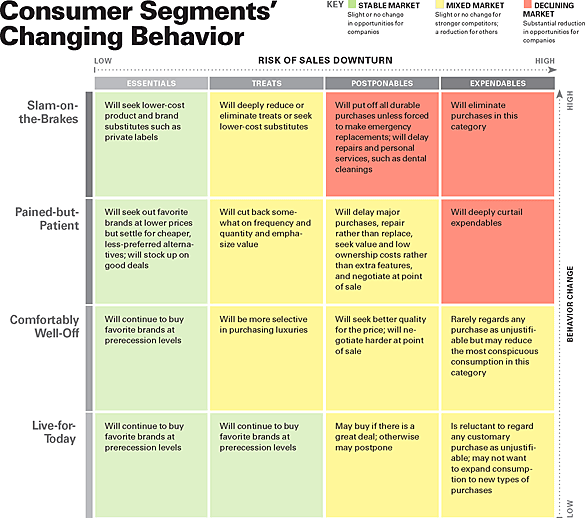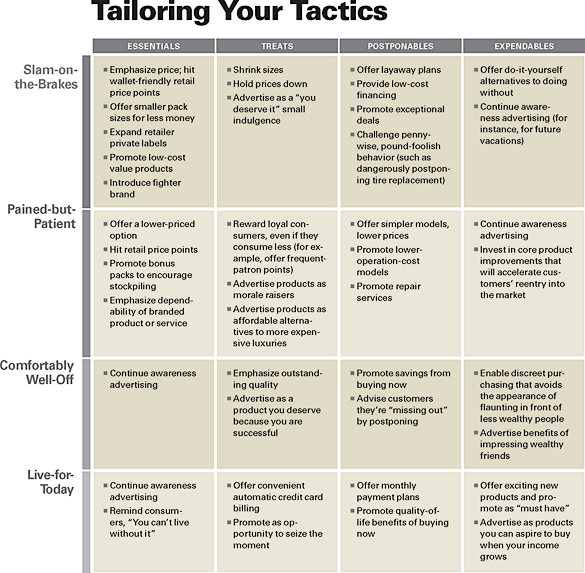

J&C Blog
Find all the latest marketing trends on the J&C Blog.

Find all the latest marketing trends on the J&C Blog.
In any economic downturn, marketers can quickly find themselves in unfamiliar territory. Sure, no two recessions are alike. But marketers who have been around the block once or twice (or three times) may notice patterns in consumers’ purchasing behavior and/or in marketers’ strategies. And those strategies can either boost or bust their overall performance.
Often what you’ll see in a recession is consumers will tighten their belts and reduce their spending. As a result, sales drop and companies start cutting costs and reducing prices. Budget cuts across the board follow.
But hold on… wholesale reductions like these can be a mistake.
So, How Do You Market In Times Like These?
Well, those of us who have been around the block can say, “we’ve seen this before.” And smart marketers know that when things get tough — you can always depend on direct.
If there is a silver cloud in this gloomy marketing landscape, it’s this:
Direct Marketing Still Works
And when you apply direct mail to your digital efforts, you’re doubly blessed.
A Potent Combination
Both digital and direct mail marketing have expanded their offerings over the past decade. Using better data to target audiences and building truly integrated online/offline campaigns is arguably the best use of marketing dollars in this down economy.
In fact, now more than ever, it’s critical that your email and direct mail campaigns are seamlessly integrated with other marketing channels — as well as laser-targeted to reach the right audience.
So, you may be wondering, what does “integrated” really mean these days? Short answer is, much more than it did 10 years ago. Your marketing messaging must be finely tuned across all channels.
When it’s executed correctly, integrated direct marketing is:
In fact, a study released by the Direct Marketing Association (DMA) projects that email marketing will generate an average ROI of $43.52 this year.
That’s 2X higher than search — not to mention other marketing channels.
Today, direct marketing is one of the few approaches that investors are still interested in. Email provider ExactTarget just got a $70 million investment. Postmaster Direct was snapped up by Q Interactive, while U.K. firm Facultas was acquired by Lyris. Smaller email service providers including BLI Messaging and Email Data Source have also gotten additional funding.
And while we’re not jumping up and down for joy yet, the employment figures are looking good for direct marketers, too. Executive search firm Bernhart Associations says that 20 percent of respondents plan to add staff this quarter — up from only 16 percent during Q2 of this year.
Historically, Direct Marketing Is What Keeps Us Going
When you look back 10, 20, 30 years, in troubled times marketers turned to direct marketing, and today direct marketers are falling back on tried-and-true tactics like email and direct mail. Not that either of these efforts can or should be done in a vacuum.
Social media can also play an important role in today’s direct marketing models. Messaging offers, and calls-to-action must all be channel and touchpoint specific — because when you look around, there are a lot more online channels now than there were just a few short years ago.
Take mobile for example. A survey from the Interactive Advertising Bureau (IAB) shows that 54 percent of people are interested in mobile as a point of contact with companies they do business with, and 70 percent would allow brands to target them on their mobile devices if they were offered the right incentives to sign up. That’s why it’s so important to design and optimize your integrated direct marketing campaigns for mobile consumers, too.
What About ROI?
It goes without saying that tracking ROI is a critical component of direct marketing campaigns. But did you know that marketing services company Epsilon reports that over 67 percent of consumers have purchased something offline as the result of online messaging?
Tracking those conversions, as you can imagine, is not easy. You can ask people to print out messages and ask them to use coupons and barcodes — but that isn’t going to catch all of your conversions, and it certainly won’t make everything as trackable as a straight response code.
Nevertheless, these indirect benefits of direct marketing give us an even more compelling reason to go back to basics.
IMPORTANT: Keep in mind that your target audience is smack dab in the middle of these tough times, too. And maybe your sales and conversion numbers should be adjusted to reflect that?
In addition to conversion numbers, there are other direct marketing benefits you should consider — engagement, awareness, consideration, relationship management, and even branding (yes, branding) to name a few. Highly targeted and segmented lists, clear goals, and hyper-personalized creative have the power to reap big benefits — even if it happens down the road a bit.
Final Thought: When Times Get Tough — Go Direct
The old saying is “I know half my marketing dollars are wasted. I just don’t know which half.” That problem is even more pronounced and painful when marketing dollars are among the first expenses to be cut. But the ability to calculate an exact ROI, target specific target audiences, and track results make direct marketing much more likely to succeed (or at the very least, they’ll help reduce the impact of a failed campaign) than other approaches. That’s the kind of assurance you want from a marketing strategy.
A recent Equifax survey of marketing professionals confirms the economic struggle. The majority -- 83 percent -- said they are either treating this recession differently than the last one or they are still trying to figure it out.
So How Do You Get Direct Marketing Strategy Started?
Again, remember we marketers aren’t the only ones reeling from tough economic times. The people we communicate with – the consumer — is also having a tough go of it. Be mindful of that when you are making plans for the other side of these recession-like conditions.
Because at some point, the economy will stabilize. When that happens, you’ll need to contend with two consumer segments. And with both segments, alternative data will be critical.

Source: Comperemedia
Take, for example, credit marketers — they can use data that is based on a consumer’s employment and income, how they pay their cable, utility, and cell phone bills this data. That type of information can help them manage the risks and measure future opportunities with better precision. Plus, with that data in hand, they can focus on different customer segments. For example:
Customer Segment 1: Those who were significantly impacted by the recession. They will likely be in “recovery mode,” attempting to reconcile delinquent payments and outstanding debt while working to rebuild damaged credit.
Credit marketers can target lower-risk consumers in the near-prime and sub-prime space to grow business during periods of economic recovery. This also helps customers improve and restore their credit standing.
Customer Segment 2: Those who were not as hard hit by the recession. Their financial health remained intact, and they may be looking to capitalize on market opportunities and purchase undervalued assets.
In this case, credit marketers can look for “recovery opportunities” among these consumers. They may want to adjust their messaging accordingly and target consumers for additional services and credit line increases. This helps advance their credit standing, and it helps them grow their personal wealth and investment portfolios.

Source: Harvard Business Review: How to Market in a Downturn.:
Focus Your Recession Messaging on Family Values
In the midst of difficult economic times, people tend to retreat to our safe place. Our home. Our families. Look for cozy kith and kin imagery to replace images of extreme sports, rugged adventure, and tough individualism. Farcical humor and pure fear plays are off limits now. Put those in storage.
Uncertainty about the economy, the multiple return-to-work scenarios, travel, etc. will cause consumers to be at home more. As a result, they’ll stay more connected with family and friends. Use that knowledge to your advantage as you craft your next marketing message.
3 TAKEAWAYS FOR CMOs:

Source: Harvard Business Review: How to Market in a Downturn.:
Of course, no one knows how long a recession might last. But if/when it does, marketers need to “adapt” rather than “abandon” their strategies to help better understand customers and what they’re going through and get back on track to revenue growth and profitability in the future.
For over 40 years through good times and bad, J&C has been helping businesses achieve better performance from their marketing efforts. Whether you need a direct marketing strategy, data strategy, acquisition campaign, retention program, or help with your post-recession marketing plan, J&C can help. Get in touch today.
Topics: Personalization, Marketing Data
303 E Wacker Drive, Suite 2030
Chicago, IL 60601
Phone: 312-894-3000
Fax: 312-894-3005